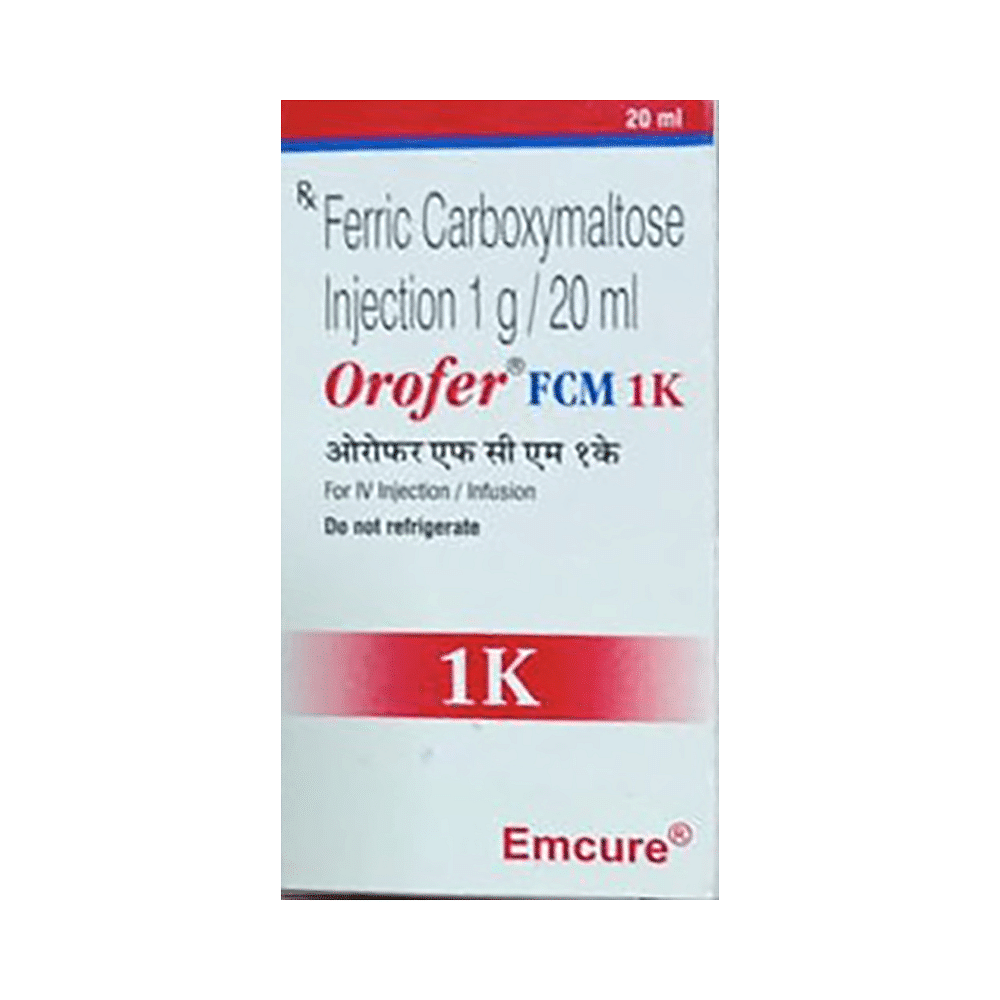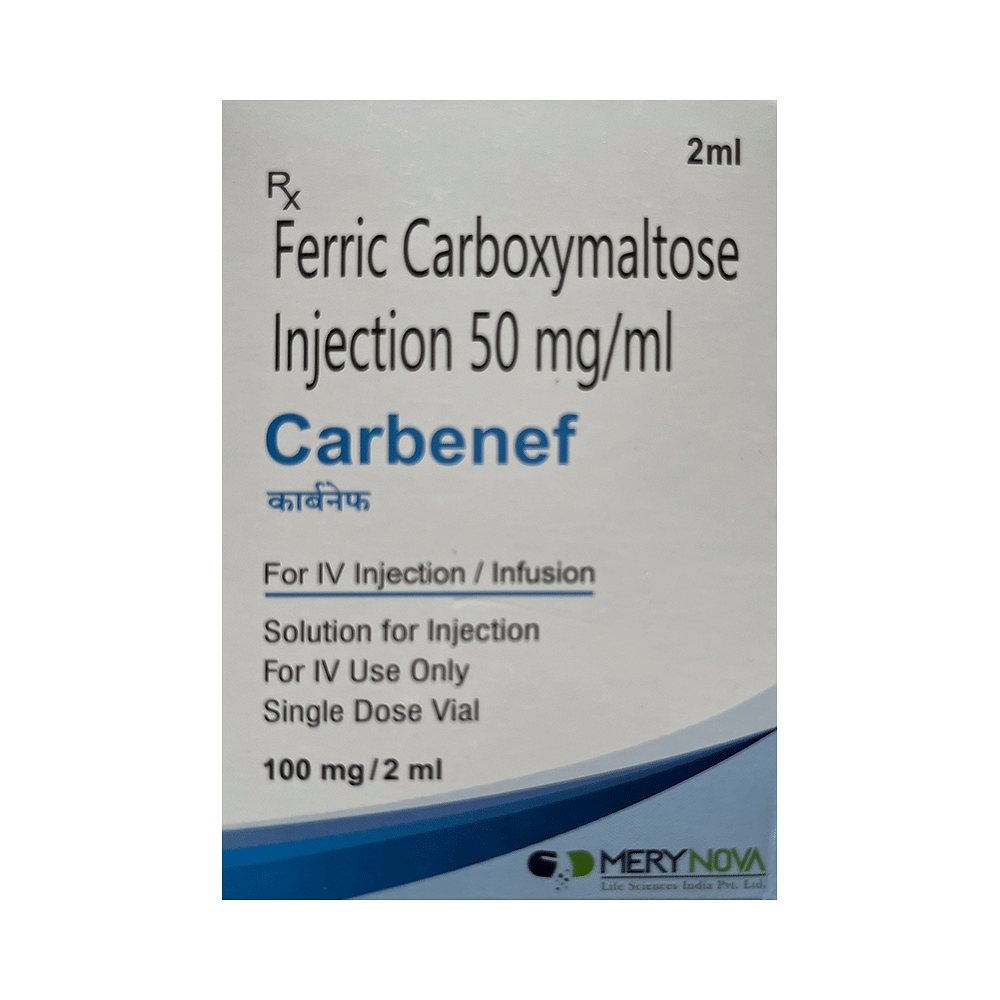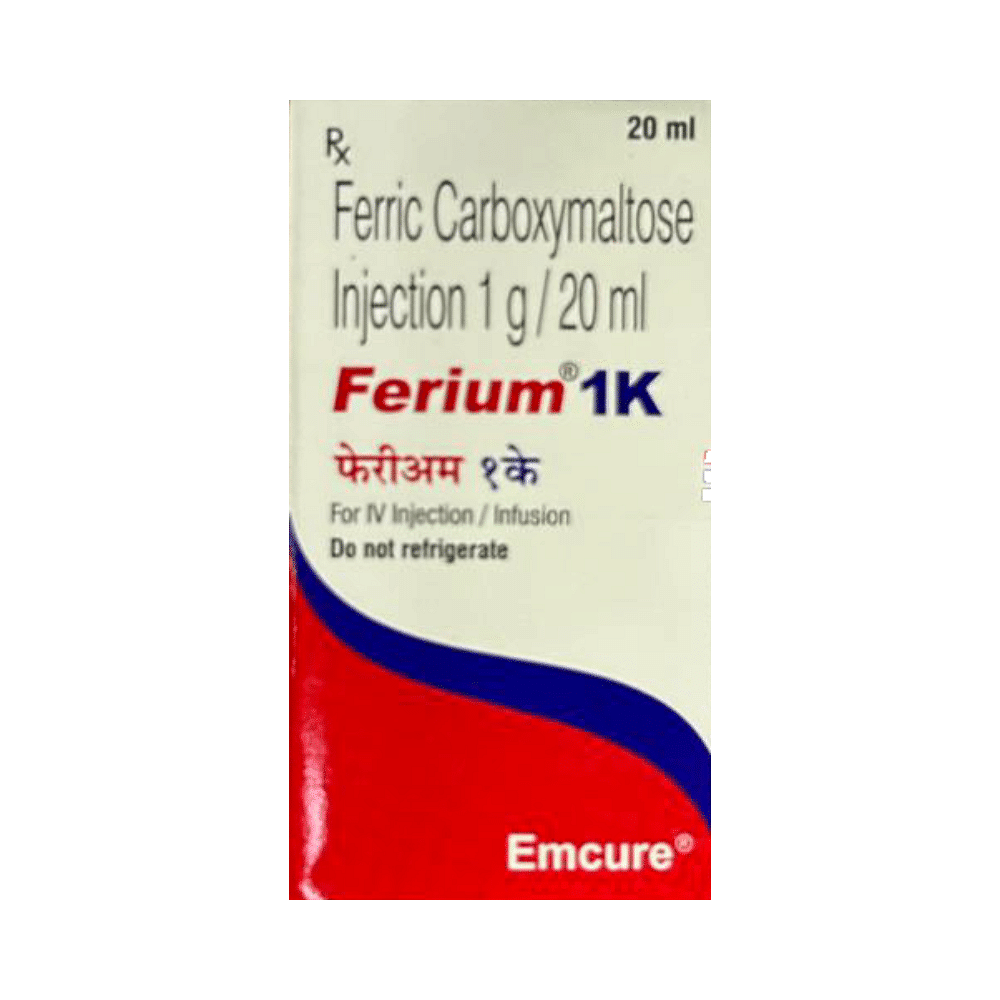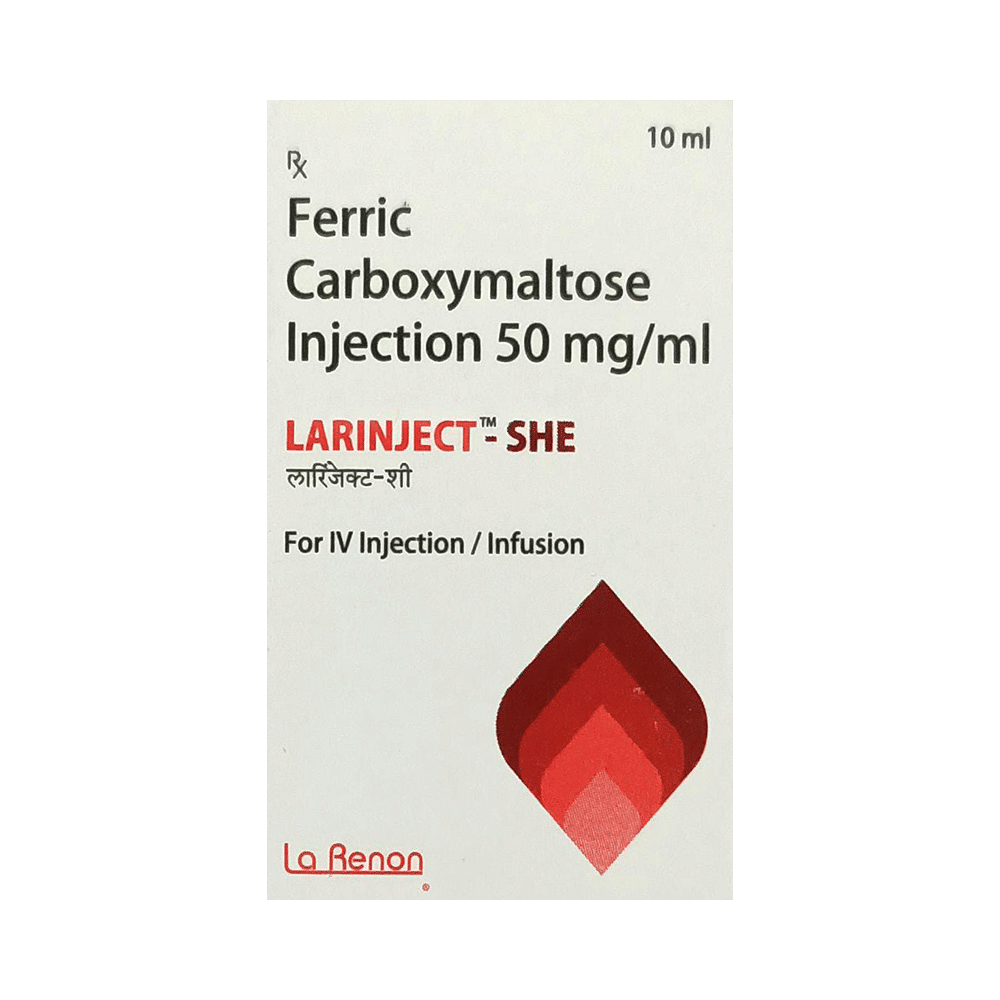
Hfciem Injection
Manufacturer
Abbott Healthcare Private Limited
Salt Composition
Ferric Carboxymaltose (50mg/ml)
Key Information
Short Description
Hfciem Injection is an iron replacement medicine used to treat iron-deficiency anemia, a type of anemia where you have fewer red blood cells due to insufficient iron in your body.
Dosage Form
Injection
Introduction
Hfciem Injection is given by injection or infusion into a vein by your doctor or nurse. It is usually given in two doses seven days apart. Your doctor will decide how much and how often you may need injections to improve your anemia. Eating a well-balanced diet that has enough iron, vitamins, and minerals can help to replenish your iron reserves. Good sources of iron include meat, eggs, raisins, broccoli, and lentils.
Directions for Use
Your doctor or nurse will give you this medicine. Kindly do not self-administer.
Safety Information
Side Effects
The most common side effects include vomiting, headache, dizziness, high blood pressure, and pain or irritation at the site of injection.
Alcohol Warning
It is not known whether it is safe to consume alcohol with Hfciem Injection. Please consult your doctor.
Breastfeeding Warning
Hfciem Injection is safe to use during breastfeeding. Human studies suggest that the drug does not pass into the breastmilk in a significant amount and is not harmful to the baby.
Pregnancy Warning
Hfciem Injection may be unsafe to use during pregnancy. Although there are limited studies in humans, animal studies have shown harmful effects on the developing baby. Your doctor will weigh the benefits and any potential risks before prescribing it to you. Please consult your doctor.
How it works
Hfciem Injection is an anti-anemic medication. It replenishes the iron stores in your body. Iron is vital for the formation of new red blood cells and hemoglobin, a substance that gives these cells the ability to transport oxygen.
Quick Tips
Hfciem Injection is used for the treatment of iron deficiency When oral iron preparations are ineffective or cannot be used Your doctor or nurse will administer it by injection Your blood pressure and blood iron levels will be regularly monitored during treatment with this medication
Related Medicines

Orofer FCM 1K Injection

Carbenef Injection

Ferium Injection

Carbenef Injection

Foxymalt Injection

Ferium 1K Injection

Fcmalt Injection

Effcm 50mg Injection

Encicarb 50mg Injection

Larinject-She Injection
Frequently asked questions
What precautions should be taken when administering Hfciem Injection?
Hfciem Injection should be administered by trained healthcare professionals who are equipped to handle potential allergic reactions (anaphylaxis). The injection can be administered directly into a vein or via a dialyzer if the patient is on dialysis. It can also be diluted with sodium chloride and infused intravenously. Monitoring for at least 30 minutes after each injection is crucial. The injection should not be administered subcutaneously (under the skin) or intramuscularly (into muscle).
How should Hfciem Injection vials be stored before use?
Hfciem Injection vials should be stored at 20°C to 25°C (68°F to 77°F). These vials must not be frozen, and the temperature range must be maintained between 15°C to 30°C (59°F to 86°F).
How often can Hfciem Injection be re-injected?
Usually, two doses of this medicine are given seven days apart. Hemoglobin is assessed at least four weeks after the final injection to allow time for red blood cell formation. If reports still show iron deficiency, further administration may occur as needed.
Can Hfciem Injection cause an increase in blood pressure?
Yes, Hfciem Injection may temporarily increase blood pressure accompanied by facial flushing, dizziness, and nausea. This can occur immediately after taking the medication and usually resolves within 30 minutes.
What should be done if there is leakage of Hfciem Injection?
Improper administration of Hfciem Injection may cause leakage from the administration site. The injection must be stopped immediately in case of leakage. Leakage can lead to skin irritation and long-lasting brown discoloration at the administration site.
Is Hfciem Injection safe during pregnancy?
Data on the use of Hfciem Injection during pregnancy is limited. It's important to inform your healthcare provider if you are pregnant or planning a pregnancy. Consult your doctor about continuing or stopping treatment as needed.


